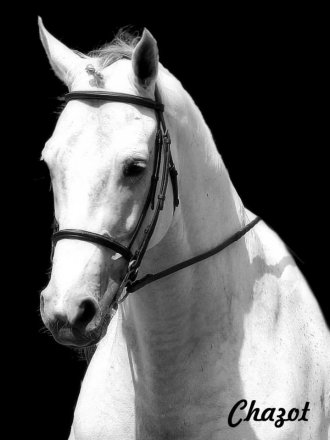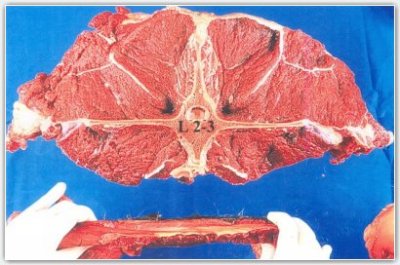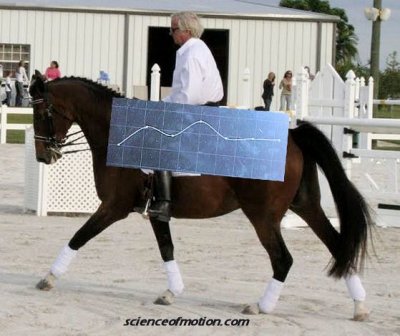Time to get out of the museum
Time to Get Out of the Museum

“In life, it is important to know when to stop arguing with peoples and simply let them be wrong.”
In 1946, E. J. Slijper came up with the “bow and string” theory. “The horse has a very flat shaped bow which is made up of the vertebral column, its epaxial muscles and ligaments. The whole structure is kept rigid and under tension from the string formed by the sternum, abdominal muscles, linea alba and the muscles of the limbs.” (E. J. Slijper, 1946) Rapidly, many scientists questioned the theory, Hildebrand, Tucker, Jeffcott, Rooney, but, curators of the museum protected the thought and still use it as the foundation of their equitation. Classical is upgrading the wisdom of our ancestors to actual knowledge. Curators of the museum preserve instead classical literature for the sake of preserving the classical literature.
 As always with core belief, the first line of defense is not asking questions as questions would trigger the uncomfortable feeling known as cognitive dissonance. Pertinent question would certainly protect horses from ineffective training techniques. For instance, how abdominal and pectoral muscles could create sophisticated adjustment of individual vertebrae? How the muscle held between the fingers of the pathologist, the rectus abdominis, could overpower the enormous muscles mass surrounding the vertebrae and create sophisticated and variable adjustments of the vertebrae and associated muscles situated above? The vertical cut on this picture has been made at the level of the second lumbar vertebrae. How, pectoral and abdominal muscles could simultaneously create extension of one part of the thoracolumbar spine and flexion of the other part?
As always with core belief, the first line of defense is not asking questions as questions would trigger the uncomfortable feeling known as cognitive dissonance. Pertinent question would certainly protect horses from ineffective training techniques. For instance, how abdominal and pectoral muscles could create sophisticated adjustment of individual vertebrae? How the muscle held between the fingers of the pathologist, the rectus abdominis, could overpower the enormous muscles mass surrounding the vertebrae and create sophisticated and variable adjustments of the vertebrae and associated muscles situated above? The vertical cut on this picture has been made at the level of the second lumbar vertebrae. How, pectoral and abdominal muscles could simultaneously create extension of one part of the thoracolumbar spine and flexion of the other part?
Richard Tucker explained in 1964 that it was in fact the muscles situate above and around the vertebrae that created forces resisting gravity as well as forward movement. “An initial thrust on the column is translated into a series of predominantly vertical and horizontal forces which diminish progressively as they pass from one vertebrae to the next”. (Richard Tucker, Contribution to the Biomechanics of the vertebral Column, Acta Thoeriologica, VOL. IX, 13: 171-192, BIALOWIEZA, 30. XL. 1964). The findings did not deter the curators of the classical literature. They rationalize, ignore and even deny anything that doesn’t fit in with their core belief.
Other instead, truly interested in understanding how the horse physique effectively functions, furthered Tucker’s finding, correcting his errors and exploring more advanced theories. Moving away from Tucker’s rotary systems theory. James Rooney suggested in 1970, that in fact the vertebrae created the support for the muscular production of forces. Today, knowledge demonstrates that muscles can hold isometrically and fascia ensure elasticity, forces can be transported through tendon and muscles in isometric contraction, “Therefore, no muscle fibers are needed to transport power and tendons can also transport power.” (Liduin S. Meerrshoek and Anton J. van den Bogert. Mechanical Analysis of locomotion, 2003).
 Stephen Levin, (orthopedic surgeon) describes how every part of an organism from molecular to the gross anatomy, is integrated by a mechanical system into a complete functional unit. Close kinematics chains combine multiple parts into continuous mechanical loops, which allows complex movements to be regulated by structures. The systems are very energy efficient.
Stephen Levin, (orthopedic surgeon) describes how every part of an organism from molecular to the gross anatomy, is integrated by a mechanical system into a complete functional unit. Close kinematics chains combine multiple parts into continuous mechanical loops, which allows complex movements to be regulated by structures. The systems are very energy efficient.
We are far away from the swinging back, stimulus response, correct aids equal correct movement, stretching and relaxation. It is time to get out of the museum. With the help of Anton van den Bogert, who authored numerous scientific studies, including “Mechanical Analysis of Locomotion,” we measured the upward forces acting on the thoracolumbar column during locomotion. We placed seven sensors on the horse thoracolumbar spine. The computer graphic illustrates the sum of the vertical forces create by the limbs movements and the thoracolumbar spine. Watching the computer graphic, I reflected that it was not surprising that our ancestors interpreted the feeling of all these forces as a swinging back. Anton quickly insisted that what we see on the computer screen was the graphic representation of upward forces. The computer does not show movements of the thoracolumbar spine. The sensors are set to register upward forces and the computer diagrams shows the variations of upward forces. But this does not phase the curators of the classical museum. They believe in the swinging back and what they see on the diagram confirm what they want to believe.
All along, horses have been quite clever at resolving puzzles. From three or four letters, the rider aids, horses have been capable to figure complex sentences. The rider aids are for the horse like a guessing game. When one horse guesses right, he is rewarded, when the horse guesses wrong, he is punished. As the complexity of the horses’ biological system is exposed, it is surprising that horses have done so well in guessing the meaning of the rider’s primitive gestures, the aids. Actual understanding also exposes the need for a more sophisticated dialogue.
We have the knowledge for a sophisticated dialogue but the practical application of new knowledge demands a fundamental shift. Gestures, aids, are obsolete. It is no longer about touching the right muscle; it is about creating situation allowing the horse to process the most efficient body coordination. It is about participating to the horse research following his mental processing and guiding his brain toward the body coordination optimally adapted to the athletic demand of the performance. “Most of the length change required for the work of locomotion, occurs not in the muscle fibers themselves but by elastic recoil of the associated tendons and muscles aponeurosis.” (The role of the extrinsic thoracic limb muscles in equine locomotion. R. C. Payne, P. Veenman and A. M. Wilson. J. Anat. (2005) 206, pp 193-404).
Biotensegrity is holding life together at all levels. Since performances are more elegant when the horse is alive, physically of course, but also mentally, harmonic tensegrity is about subtle nuances in muscle tone. Tensegrity allows structures that would be otherwise six-time bigger to produce, absorb, resist, redirect forces. This is how nature evolved allowing animals like horses to have relatively thin legs and consequently the capacity to jump and move fast. Elastic energy is what allows a small muscle, such as the biceps brachii to catapult the front limb forward. Without the internal tendon storing and reusing elastic energy, the biceps brachii would have to be eight times bigger to do the same job.
The rider has to talk to the horse a language that the horse is designed to understand, tensegrity, elastic energy, force transport. The conversation with the horse is about nuances in muscle tone. Muscle tone is also how muscular elasticity is created. Muscle tone is how fascia is kept under tension. It is all about nuances in muscle tone, but it is indeed subtler than that. Muscle tone creates the tension of tendon, aponeurosis and fascia, which is the network creating gaits and performances. The subtlety is beyond what we control normally but we can refine our capacity of creating appropriated tensegrity if we dialogue honestly and kindly with the horse. A real friend is the one who knows our defects and still likes us. This is true with the horse. If we judge the horse’s defects we are not his friend. If we know the defects and ensure our safety in order to maintain a productive conversation, we are good friends. Tensegrity and the mastery of tensegrity is what the equitation is about. This is complex but the complexity is fascinating. Knowledge evolves and evolving with knowledge is our responsibility and what we owe to the horse. Some will argue but letting them be wrong give us the benefit of their errors. Paraphrasing Eleanor Roosevelt, we have to learn from other people’s mistake; we cannot live long enough to make them all ourselves.
Jean Luc Cornille


 twitter
twitter facebook
facebook pinterest
pinterest linkedin
linkedin